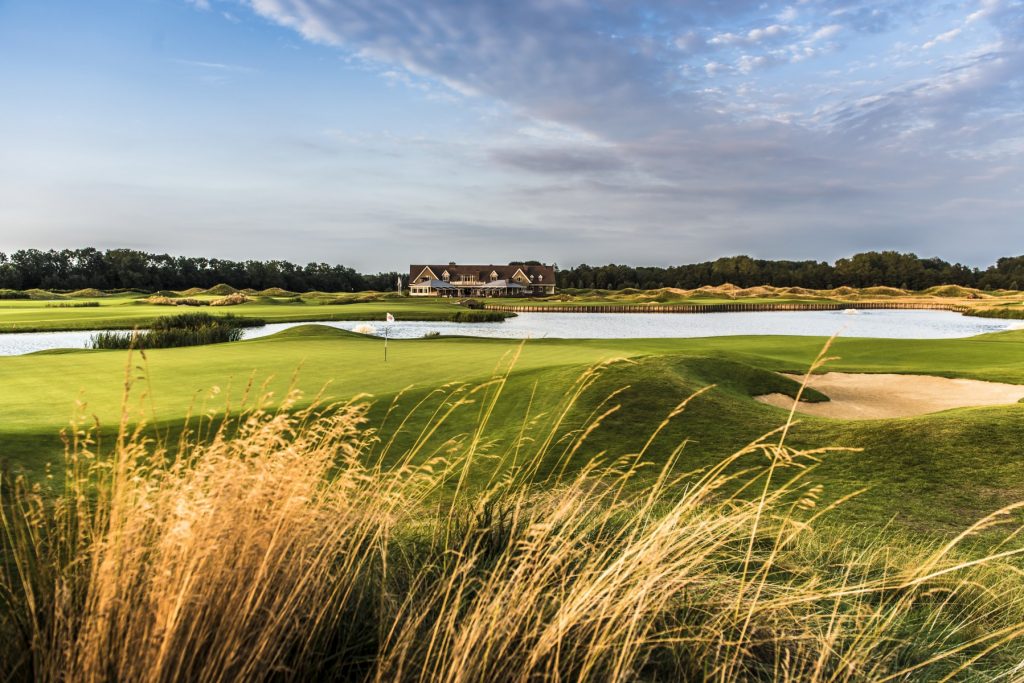Future-proofed course design
If you thought the ‘distance debate’ about how far a golf ball travels was limited to the professional game, think again.
The longer lengths of drives from players of all abilities is increasingly problematic for courses, posing a danger to areas that were once out of reach.
The solution? Data, says Jeremy Slessor, Managing Director at European Golf Design.
“The distance players, both amateurs and professionals, are hitting the golf ball is evolving, and so real estate situated around golf courses that once were safely out of bounds are now becoming at risk,” said Jeremy.
“Over the last five years or so, an increasing percentage of the work we do is focused on course renovations.
“This is where the power of data comes in.
“By analysing ball dispersion data for example, we can pinpoint precise danger zones, problem areas and properties that are at risk of an errant golf shot. Using the data, we can demonstrate to stakeholders how best to renovate their course(s) accordingly.”
As well as solving safety issues, data is also being used to ensure spectators are treated to competitive drama at elite events.
Commenting on the mind-boggling set of numbers the team at EGD drew on for the 2023 Ryder Cup course at Marco Simone Golf & Country Club, he explained:
“At Marco Simone, we had access to shot-by-shot data from three Italian Opens played on the course prior to the Ryder Cup, which we could use to inform course set-up day-to-day depending on weather conditions to maximise excitement and drama – which is ultimately what the fans want to see.”
Efficient and sustainable maintenance
Once a golf course has been designed and built – or re-designed and renovated – recent advancements in maintenance technology have transformed how a greenkeeping team looks after it.
Paul O’Donoghue, Superintendent at The Dutch, says these innovations have been crucial amid climate change and longer spells without rain.
“We gather data annually to track how much water we are using and collecting, and work out how we can be more efficient with our irrigation,” he said. “Having that data has helped us make changes such as upgrading sprinkler nozzles, optimising grass lines and expanding non-irrigated areas.

“Having the technology at our fingertips has not only allowed us to optimise our resources while still maintaining excellent conditions, it has meant we can send a very positive message to our community.
“In drier periods, people ask why we’re using water for the course when they are not allowed to wash their cars or water their gardens.
“Being able to show that we are upholding our responsibility to the environment by reducing or eliminating water use during dry spells is important.
“And it’s not just our own members and guests we are telling. Whenever we host a professional tournament here, we give out free tickets to the local community so we can show them first-hand the initiatives in place and the consideration we have for the environment.
“All this helps open up what can be deemed a ‘closed’ sport and allow us to share – and more importantly show – the positive steps we are taking to a wider audience that might have misconceptions about the benefits golf courses can bring.”
Technology for Tour-quality turf
At the sharp end of the game, technology is helping achieve consistent course conditions across tournament venues for the world’s best players.
Eugene Hennessy, Agronomy Consultant at the DP World Tour, explains: “One of our top priorities in tournament set-up is delivering consistency for players. While every golf course has its unique characteristic, we strive to maintain a reliable standard across all venues.
“Technology plays a crucial role in achieving that. One of the most important tools we have is the soil moisture sensor. These small gadgets enable us to regulate greens to a certain firmness, speed and moisture level, so we are continually monitoring these conditions in the build-up to and during a DP World Tour event and making informed decisions.

“Every recording is logged, compiling data that we can then use to optimise maintenance in the present and the future. We can spot trends and make changes accordingly. It completely removes the guesswork from golf course maintenance.”
Another key technological development is smart irrigation systems, which give courses real-time data and evapotranspiration rates so they water only when and where it is needed. These systems significantly reduce water waste, reduce water bills and energy costs and promote healthier turf.
“Contrary to assumptions, we actually use very little to no water during tournament weeks to maintain firm playing conditions,” adds Eugene. “Of course, weather conditions vary and each week presents new challenges, but with the technology and data available to us, we’re equipped to deliver consistent surfaces players expect, no matter the weather.”
From shot analytics for design to moisture sensors for maintenance, data and technology are allowing golf courses to optimise playability, conserve resources and reduce environmental impact.
And whether it’s a world-class resort, a DP World Tour host venue or an aspiring club, embracing data can transform a venue into a more efficient and profitable operation.





